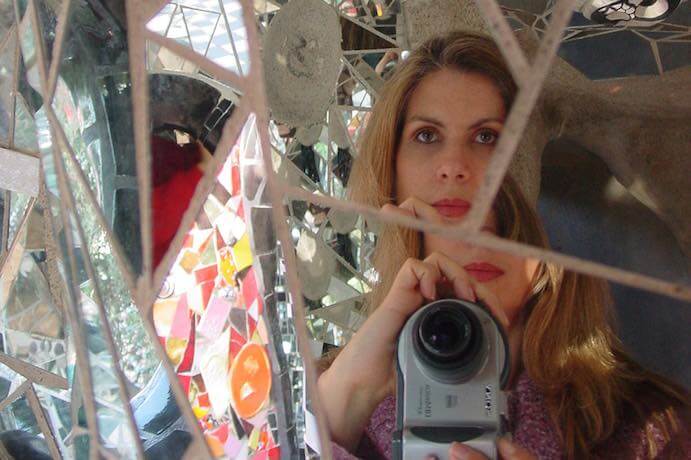Dorothy Hindman is Associate Professor of Composition at the Frost School of Music at the University of Miami, a post she has held since 2010. Hindman combines her work as a composer with advocacy and education in contemporary classical music. Her album Tightly Wound from innova Recordings features string music from a twenty-two-year slice of her compositional career, performed by various solo artists and chamber ensembles. The earliest is drowningXnumbers (1994) for amplified solo cello, and the most recent is Heroic Measures (2014) for a trio of clarinet, violin/viola, and piano. There is also one revision, Setting Century, which debuted in 1999 and was revised in 2016.
Tightly Wound needed a different approach to listening than my regular process. When I dig into a new album, I usually start with Track One–I listen straight through and try to get the big picture of what the artists are trying to express. However, I found that I most enjoyed Hindman’s music in chronological order–hearing the growth and maturation of Hindman’s style, voice, and ideas as they developed over the twenty-two years covered on Tightly Wound tied everything together.
Hindman self-identifies as a spectralist and a Husserlian phenomenologist, and cites punk and grunge as influences for her sound. Spectralism promotes music as a sensory experience instead of a purely intellectual one, and focuses on using the characteristics of sounds (such as timbre) instead of objective structures as the main focus. Where a serialist might be interested in creating music that is objective, mathematic, and analytical, a spectralist is more interested in imbuing music with personal meaning. In Hindman’s music, this personal meaning comes in large and small devices: as small as using a personal phone number to determine the progression of meters in a piece, and as large as her experiences of seeing famous monuments or the death of her father.

The spectralist sensibility of her music is closely linked to the composer’s interest in phenomenology. Phenomenology maintains that human perception is the primary measure of reality, and Hindman’s music experiments with manipulating her listeners’ perceptions. Her philosophical interest in phenomenology (specifically that of philosopher Edmund Husserl) comes from exploring how listeners experience music in real time, and how music can alter listeners’ perception/experience of time. This interest is more obvious in her recent repertoire than in some of her earlier works, and as her repertoire progresses, that manipulation of time emerges as the overarching theme of Tightly Wound. Other themes such as adversity, illness/death, the human experience of history, and narrative come up in phases, but experiencing these sub-themes in time is what ties her oeuvre together.
When listened to chronologically, three distinct periods show up on the album: an early rhythmic period; a sparse minimalist middle period in the 2000s; and a return to more rhythmic music after 2010. The early work distinguishes itself by its higher notes per minute ratio than her sparse music of the early 2000s. The sparseness allows her to manipulate (perceived) space as well as (perceived) time in music. Setting Century (1999), Jerusalem Windows (2002), Taut (2003), Time Management (2003), Needlepoint (2004), centro (2005), and three small gestures (2006) all fall into this minimalistic category. They are all written for soloists or small ensembles that function more as groups of soloists than as a collective, and they are very quiet pieces. They also require a great deal of focus to listen to. None are so assertive as the earlier drowningXnumbers (1994).
There is a significant break between three small gestures (2006) and Road to Damascus (2010), after which her music begins to move away from the austerity of the 2000s. The sound is larger and fuller, and more pieces integrate technology and fixed media. Sound/Water (2011) for cello and fixed media is an excellent complement to drowningXnumbers (1994), and soloist Craig Hultgren executes both with ease. Fantasia for Karen Alone (2010) is an excellent bridge between the more austere style and the newer works. The writing is still sparse and improvisatory, but it belies the intense precision that playing with fixed media demands from the soloist. The most recent work, Heroic Measures (2014) performed by the Pulse Trio (clarinet, violin/viola, and piano), may indicate where Hindman’s music is going next. It has much more movement, direction, and cohesion than some of her previous chamber music. Heroic Measures is not a piece contemplating stasis. If the movement and perception of time continues to be a theme in her music, then time seems to be picking up speed.
The standout piece on Tightly Wound is drowningXnumbers. It is an angular, rhythmic combination of acoustic sounds and technological enhancements. All of the sounds are produced by the cello using traditional techniques, and are then enhanced or made more effective by the amplification. Of all the pieces offered, this is where Hindman’s punk/grunge influences are most obvious. Second would be Sound/Water (2011) for many of the same reasons. The punk/grunge influence is a bit less obvious, but still there. Of all the music presented on Tightly Wound, these two are what I most want to hear more of in the future.
























